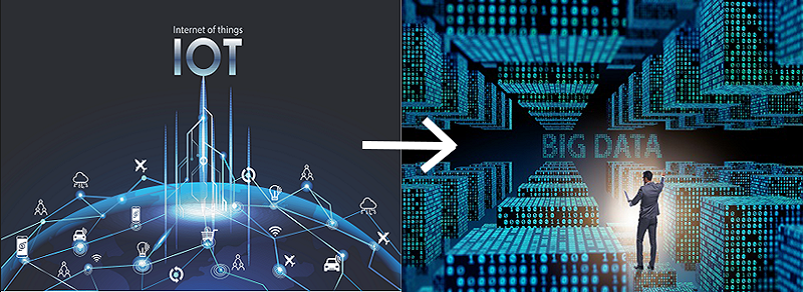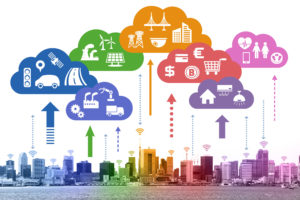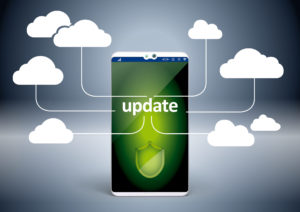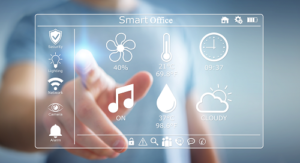Did you know that by 2020 it is estimated that the number of IoT devices being used will reach up to 50 billion? That is correct, the Internet of Things (IoT) industry is still very young and growing rapidly. Technically, the human civilization is experiencing a new wave of internet connectivity where smart IoT devices are governing every action of our daily lives, wirelessly. In particular though, the Sub 1G LPRF (Sub 1 Gigahertz Low Power Radio Frequency) technologies. Sub 1G technologies are particularly useful for RF IoT devices and differ from, say, 2.4GHz technologies in that they have substantially larger range and lower power consumption.
In this blog post we will be answering many questions, such as, why are Sub 1G LPRF technologies the talk of the town? How can I create a reliable Sub 1G LPRF network? What are the use cases for these technologies? And, what do we do with all the data collected?
Why Are Sub 1G LPRF Technologies The Talk of The Town?
To decipher this, I will put on my Sherlock Holmes hat and take you on a little journey through our recent history in the IoT industry. Our journey starts with the silicon technology evolution. Many low power wireless technologies already existed before IoT became a fully formed concept. For example, Bluetooth low energy was designed to link peripheral devices such as heart rate belts to a cellphone. The industry was able to cope because there were few sensors that needed to be replaced or maintained, and therefore, it was also cheap. As the IoT industry began evolving, it became apparent that future wireless systems would have thousands of wireless sensors collecting a plethora of data, the wireless technologies would have to adapt to this. With the silicon technology evolution, as predicted, humans are integrating more and more sensors (in the thousands) into our lives. Sensors are now much smaller in size and cheaper. Additionally, they have lower power which allows for the flexibility of battery-operated sensors. Since the sensors are battery operated, they are much more flexible in terms of where you can place them, and they have a very long battery life. And so, with this, LPRF technologies were born! *takes off Sherlock Holmes hat*
Today, we can connect to a massive number of devices in pretty much any location we desire thanks to the technological advancements in LPRF technologies. To give you an idea of just how massive these systems can be, RIIoT, Radiocrafts’ new low power, long range, and reliable dense IoT RF network, can have up to 65,000 nodes in a wireless network! Yes, you read that correctly, 65,000 nodes! Impressive right? but how?
How Can I Create a Reliable Sub 1 G LPRF network?
Radiocrafts has chosen 3 main factors which are vital for creating such a network:
- Reliability – What does reliability in an RF network mean? To put it in simple terms, it means to minimize packet losses. How can we minimize packet losses then? There are several ways including Ack/Retry, LBT (Listen Before Talk), and short Tx pulses. Ack/Retry means that if the data is not received, the module will repeat the data until it is received properly. It ensures that good data is received, but is only possible if the signal length is relatively short, which is supported by RIIoT. This leads us to our next topic which is short Tx pulses. For battery-operated systems with many sensor readings, a short Tx pulse is paramount for reliable data transfer. For example, RIIoT’s Tx signal length for 12 bytes application data is 4.5ms, which is very short in sub-GHz LPWAN transmission technologies. Finally, LBT is also important for reliability. LBT is a technique used in radio communications whereby a radio transmitter first senses its radio environment before it starts a transmission. It can be used to find a network in which the device is allowed to operate in or to find a free radio channel to operate in. All of these features are supported by RIIoT and to prove that these features are vital for reliability, Radiocrafts ran a test on RIIoT. Using 28 nodes and sending data randomly every 4 seconds, we achieved an incredible 99.8% good packets received. Pretty impressive right?
2. Low Power – Having a low power device today is the most crucial characteristic for an IoT device. Don’t believe me? Just imagine, having at least 1,000 sensor nodes out in a 15km long open field and having to change the battery for each of these nodes or completely replace them once every two weeks. Can you imagine the excessive costs this would lead to? From having to hire a large maintenance team to buying several thousands of batteries
and devices twice a month. Yeah, that sounds like absolute hell for your wallets and bank accounts. To achieve low power, you need to have a short Tx pulse and low sleep current. For example, using smaller transmit pulses will increase battery lifetime. Long transmission times used in many LPWAN technologies such as LoRaWAN, which are optimized for range, would need a large lithium battery or super-capacitor in order to handle high current bursts during TX, but, that also increases the cost of the nodes. Meanwhile, with small energy pulses, such as with RIIoT, you have the flexibility to choose a coin cell battery which is much cheaper, smaller, and does not require an expensive super-capacitor. Additionally, since you have a small, coin cell battery operated device which is cheap, you can place several thousand nodes in pretty much any location you desire. Just to give you an idea of how low power an LPRF technology can be, a RIIoT node that sends a short packet with 12-byte payload data every hour can live 20 years on a small and cheap 150mAh battery. A CR2025 coin cell battery has 160mAh capacity and is the size of two 10 Euro cents on top of each other. So, hypothetically, you get 20 years lifetime for 20 cents. What a deal hey!? Low sleep current is another important factor for achieving low power. In water metering for example, where the meters spend most of their time in sleep mode, very low sleep power consumption is required to remain low power. In this case, sleep current is the parameter that is most responsible for power consumption. In other applications such as data logging, your data logger will go in and out of sleep mode quite often, so limiting the time spent in the wake-up transition modes is critical.
3. Future Proof (Over the Air Updates) – Over-the-air (OTA) updates are another important feature for LPRF technologies to have because it ensures that your devices will be future proof. OTA updates can be achieved with good downlink data-rates and sufficient memory support. The updates are sent over wireless connections to distribute provisioning information or software updates to a connected device, and to ensure that the device is in proper working order. In today’s connected world, where there are thousands upon
thousands of devices which need to be monitored and maintained, it is much more convenient to send an improvement, bug fix, or upgrade to you wirelessly than requiring you to connect a device to a computer. Good downlink data rate is crucial for making OTA updates because, for example, if you are trying to download an update OTA, you need to make sure your data arrives to the end node as quickly and as reliably as possible. Additionally, you need to have sufficient memory to be able to support various OTA updates. For example, RIIoT supports these 2 features, therefore, you can upgrade your RIIoT nodes in the field with new sensor/actuator interfaces, new signal processing algorithms, and updated security patches.
Use Cases
LPRF technologies have several different use cases and applications, here are three cool ones that help us to create a better world:
1. Smart City – One example of a use case in Smart Cities is waste management. In most cities around the world, waste management can be quite difficult and costly due to operational service costs. Smart cities use smart waste containers which detect the level of trash inside and sends the information to a control center which then optimizes the collector truck route. This process significantly reduces the environmental footprint and keeps our streets squeaky clean.
2. Agriculture and Smart Farming – The agricultural sector was one of the early adopters of IoT. Precision agriculture powered by IoT can help farmers better measure things such as soil nutrients, number of seeds planted, soil water and more. Farming becomes much more efficient and will reduce the need for fertilizers.
3. Healthcare applications – IoT applications for healthcare include remote health monitoring, elderly care, chronic disease, and others. Currently 2.4GHz devices such as Zigbee and WiFi are being used because of their low cost and the globally license free band. However, with the increase in the number of sensors, these technologies will not scale. The limitations in 2.4GHz technologies and the cost of cellular technologies have driven people in the healthcare sector to seek sub 1G LPRF technologies as an alternative.
Want to read more about Sub 1G LPRF use cases? Please read our Wireless Sensor Network applications webpage.
What Do We Do With All The Data Collected?
Did you know that the IoT is already estimated to be generating 100s of zettabytes (trillion gigabytes) of data per year? And shockingly, this figure is only increasing! So why on earth would we need trillions upon trillions of gigabytes of data? To build our own version of the Death Star perhaps? The answer to this question is quite simple actually. BIG DATA. Big Data is defined as a combination of tools to process enormous amounts of structured or unstructured data with statistics and probability to predict outcomes that could happen in the future. Calling trillions of gigabytes of data “big data” is an overwhelming understatement if you ask me, but hey, it sounds much better than ABUNDANT DATA or something similar. Anyhow, after we have collected all this Big Data, what do we use it for? Well, the current usage of the term “Big Data” refers to the use of predictive analytics, user behavior analytics, or other advanced data analytics methods that extract value from data. Analysis of data sets can find new correlations to spot business trends, combat crime, prevent disease and WAY more. Big Data allows us to unveil new knowledge we never understood before through studying and analyzing the mountainous amounts of data we collect on a daily basis.
One example for a use case of Big Data is facility optimization in the office space. Thanks to Big Data and the Internet of Things, smart connected devices can lead to a more efficient and innovative office space. Embedded sensors in key places around the office collect data on which parts of the building are being used and at what time. Then, electrical components can be automated to power on, power off, and dim when necessary. Sensors outside the building can obtain real-time weather analytics to adjust for changes in temperature, prompting the air conditioner or the heater to start up. That is pretty cool if you ask me.
What To Take Away From This?
What you should take away from this blog post is that our cities, farms, world infrastructure, and technological know-how are ever-growing, so, the demand for LPRF technologies with their characteristics – reliability, low power, and future proof – are growing as well. We need to understand how these technologies work, what the most effective use cases for these technologies are today, as well as understanding that industries such as the healthcare industry are evolving as well. Companies working with LPRF technologies need to be able to foresee these evolutionary trends and adapt. This predictive behavior can be achieved via the analysis and study of Big Data so that we can improve our technologies in accordance with the forecasted demand.
So, what do you think the future has in store for Sub 1G LPRF technologies? Which one of the Sub 1G LPRF technologies do you see most potential for growth in the future? Do you disagree with one of our statements? Use the comment section below to start discussions, ask questions, or just to give feedback and say hi. Radiocrafts or another blog reader will answer!
If you are interested to learn more about Radiocrafts’ new product line, RIIoT™, please visit our webpage here.






